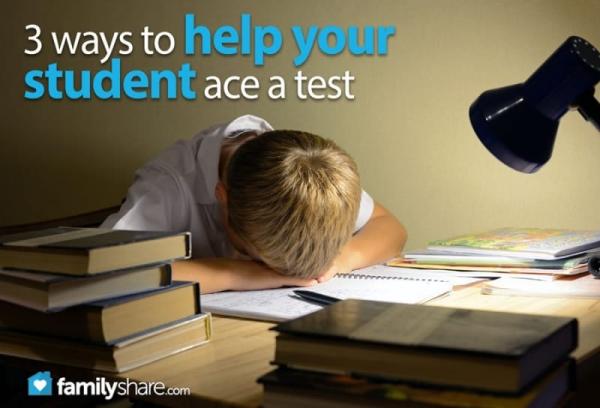
For better or for worse, test taking has become a cornerstone of the modern academic environment. Admittance to college is nearly impossible without this much needed skill. This raises several concerns when it comes to our children's academic success. How do we help our children become expert test takers?
As a teacher myself, I have been allotted very little time for each student individually unless they choose to meet with me before or after school. However, there are many test taking techniques you can teach your child that will help improve his test scores. The only way to truly ensure your child's success is to help them develop those study skills that will allow them to excel on their tests.
1. Sifting through the information
Students are bombarded with endless amounts of information from teachers, textbooks and other sources. It is difficult for first time learners to make sense of it all. They may not be able to determine what information is of most importance. The first step of effective studying is to determine what is most important.
The most reliable source is the teacher. Study guides are a great source of determining what information is of most importance and can most easily be found online. Schools have sets of standards for each subject that list what is expected for students to learn. Take a look at these standards to see what is expected of your student.
2. Note taking
Many students do not understand the importance of taking notes. However, good note taking is essential to good studying. The notes will provide a framework for studying. It also helps the student understand what the teacher or text views as most important and will often provide an understanding of what may be on the test.
There are many techniques for taking notes which can be found online. They usually follow two key formats: outlining and mapping. Outlining is more of a linear method of organizing notes. This is the method most employed by students because it quick and easy when jotting down notes in class. However, it is the worse method for retention of information.
Mapping, on the other hand, utilizes the brains natural means of recording and accessing memories. Rather than the linear straight down the page approach of outlining, mapping uses a radial pattern, starting from a key central point and branching out into sub ideas. Mapping also uses visual depictions of the information that are fun and leave a more lasting impression on the brain. It takes some practice, but students adept at mapping can increase their retention significantly. Starting out, students may want to take their notes in class using outlining, then transpose them to a mapping format when studying. Mapping is the type of note-taking technique my wife and I use to teach our children at home.
3. Retention
The simplest way to retain information is the review method, where the student goes over his notes several times prior to the test. While this method has been successful for many, recent studies have suggested another technique that is much more effective in helping students retain information called multi-testing. In this method, students do not just review the information, but quiz themselves on the material in a way similar to the test. Students who multi-test have been able to significantly increase their retention of material.
There are many ways of multi-testing. Many study guides will provide practice tests that can be taken. If practice tests are not available, students can write the information down on flashcards accompanied by a question about the information. They can then go through the notecards, answering each question and leaving out any flashcards they were not able to answer for further review. This method not only helps them determine what information they are struggling to remember, but can also help the student feel more confident when going into the test, having already been faced with similar questions. As a teacher, I have taught the flash-card method time and time again to students who have struggled with taking tests in the past and they have had great success with it.
When the day comes for the test, students will be less stressed and more certain of success if proper study habits are employed. More important than passing the test, students will have acquired the skills necessary to assimilate, organize and utilize information, a skill most needed for today's working environment.

